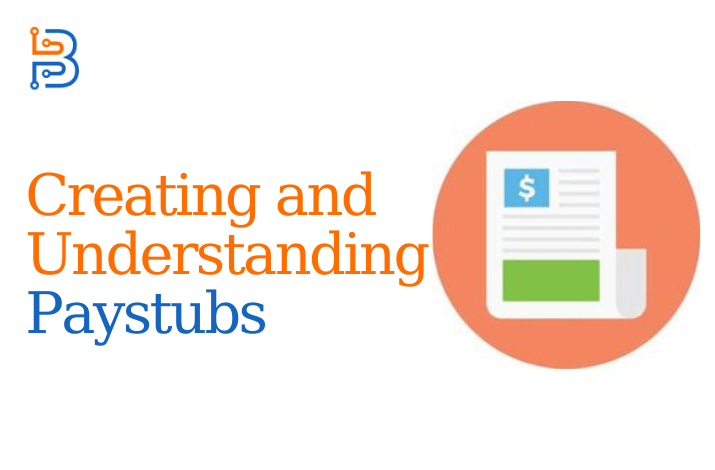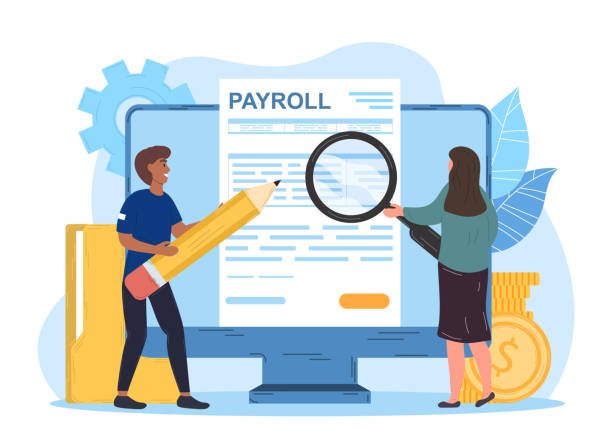A Step-by-Step Guide to Creating and Understanding Paystubs

In the realm of finance and employment, paystubs serve as a universal language, detailing the earnings and deductions of employees. Their importance transcends mere transactional records; they are legal documents that can influence credit applications and employment verification. This guide will provide a comprehensive step-by-step approach to creating and understanding paystubs.
What Are Paystubs?
Paystubs are documents that accompany a paycheck, providing information about an employee’s earnings, taxes, deductions, and net pay for a specific pay period. They are essential for employees to ensure they are paid correctly and for employers to maintain accurate financial records.
Guide to Creating Paystubs
Step 1: Gathering the Necessary Information
To generate a paystub, start by collecting the following data:
- – Employee’s personal information (name, address, social security number)
- – Pay period and pay date
- – Employee’s pay rate (hourly/salary)
- – Total hours worked (if applicable)
- – Gross earnings
- – Deductions (federal and state taxes, Social Security, Medicare, retirement contributions, etc.)
- – Any additional withholdings (insurance premiums, union dues, etc.)

Step 2: Calculating Gross Earnings
Gross earnings represent the total amount earned before any deductions. For hourly employees, multiply the number of hours worked by their hourly rate. For salaried employees, divide their annual salary by the number of pay periods in the year.
Example:
For an hourly employee earning $15 per hour who worked 80 hours in a pay period:
80 hours x $15/hour = $1,200 gross earnings
Step 3: Understanding and Calculating Deductions
Deductions reduce the gross earnings, resulting in the net pay. They can be mandatory, such as taxes and Social Security, or voluntary, like retirement plan contributions. Use the appropriate tax tables and percentage rates to calculate these deductions accurately.
Tips:
– Always refer to the latest tax tables for accurate calculations.
– Consider using payroll software to automate deduction calculations.
Step 4: Documenting Net Pay
Net pay is the amount an employee takes home after all deductions. Subtract total deductions from the gross earnings to determine this figure.
Step 5: Creating the Paystub
Once all calculations are done, you can create the paystub. This can be done manually, but using a service like ThePayStubs streamlines the process, ensuring accuracy and compliance with legal requirements.
Tips:
– Double-check all entries for errors.
– Ensure compliance with state laws, as some have specific requirements for paystub information.
Additional Information: Legal Considerations and Best Practices
In many jurisdictions, providing paystubs is not just a best practice; it’s a legal requirement. Employers must ensure that paystubs are comprehensive and compliant with state and federal laws.
Case Studies
For instance, a case study published in the “Journal of Accountancy” detailed how a small business improved their payroll process, including paystub generation, by adopting automated payroll systems, which not only saved time but also reduced errors significantly.
Read Also: Best Paying Tech Jobs for Women
The Importance of Paystubs in Financial Management
Paystubs are not only vital for record-keeping but also play a crucial role in an individual’s financial management. They are often required when applying for loans, mortgages, or even renting an apartment. They serve as proof of income and employment, which can significantly impact an individual’s financial credibility.
Example:
When Jane Doe applied for a home loan, her lender requested the last three months of paystubs to verify her income. Because her employer provided detailed and accurate paystubs, she was able to furnish the required documents promptly, facilitating a smoother loan application process.
Paystub Components and Their Significance
A paystub typically includes several components that provide a snapshot of an employee’s earnings and deductions. Each element has its significance:
– Year-to-Date (YTD) Totals: This reflects the cumulative earnings and deductions for the year and is essential for tax preparation and tracking earnings trends.
– Earnings: Details regular wages, overtime, bonuses, and commissions.
– Deductions: Itemizes pre-tax and post-tax deductions, providing transparency into the amount withheld from an employee’s gross pay.
– Employer Contributions: Displays the employer’s contributions to health insurance, retirement plans, and other benefits, illustrating the total compensation package beyond the net pay.

Tips:
– Regularly review your paystub components to understand your financial picture fully.
– Ensure that YTD totals are accurate to prevent any discrepancies during tax season.
Automating Paystub Generation
With the advent of technology, the manual creation of paystubs has given way to automated systems. These systems reduce the margin of error and save time for both the employer and the employee. They can also store paystub data securely and make it easily accessible for future reference.
Case Studies:
A study by the “American Payroll Association” highlighted that companies that transitioned to automated payroll systems observed a 40% decrease in payroll-related errors. Furthermore, employee satisfaction improved due to timely and consistent access to accurate paystub information.
The Role of Paystubs in Dispute Resolution
Paystubs can also play a critical role in resolving disputes regarding wages. They serve as evidence of the pay agreed upon and the amount actually disbursed.
Example:
An employee once challenged their overtime payment, and thanks to well-documented paystubs, the employer could quickly resolve the dispute by providing clear evidence of the overtime hours worked and the corresponding payment.
FAQs on Paystubs
What if there’s a mistake on my paystub?
If you find a mistake, report it to your employer or HR department immediately so they can correct it and issue an updated paystub.
How often should I receive a paystub?
This can vary by employer, but generally, you should receive a paystub each time you are paid.
Can paystubs be used for tax purposes?
Yes, paystubs include tax deductions and can be used to estimate income and taxes for tax preparations.
Navigating the Paystub for Financial Planning
Beyond their immediate purpose, paystubs can be a powerful tool for employees’ personal financial planning. By providing a clear breakdown of earnings and deductions, paystubs can help individuals plan their budgets, understand their financial standing, and make informed decisions about their savings and expenses.
Strategic Budgeting with Paystub Details
Every line on a paystub can inform an employee’s budgeting strategy. By regularly analyzing their paystubs, employees can track their income trends, adjust their tax withholdings to avoid owing taxes at the end of the year, and ensure they’re maximizing employer-matched contributions to retirement plans.
Example:
Consider the case of an employee who plans to invest in a higher education fund for their child. By studying their paystub, they can determine how much of their net income is available for investment after all deductions are made.
Tips:
– Use the detailed earnings information on your paystub to identify potential areas for increasing savings or adjusting spending habits.
– Consult a financial advisor with your paystub in hand to discuss ways to optimize tax deductions and take-home pay.
Utilizing Paystubs for Long-Term Financial Goals
Paystubs shouldn’t just be filed away; they should be analyzed with an eye toward the future. Understanding the details can help employees set realistic goals for debt repayment, home ownership, or retirement planning.
Conclusion
The creation and understanding of paystubs are foundational to efficient financial and business management. By employing the steps outlined, businesses can ensure they remain transparent and fair in their payroll processes, while employees can better manage their finances and be prepared for any financial verification processes they may encounter.






